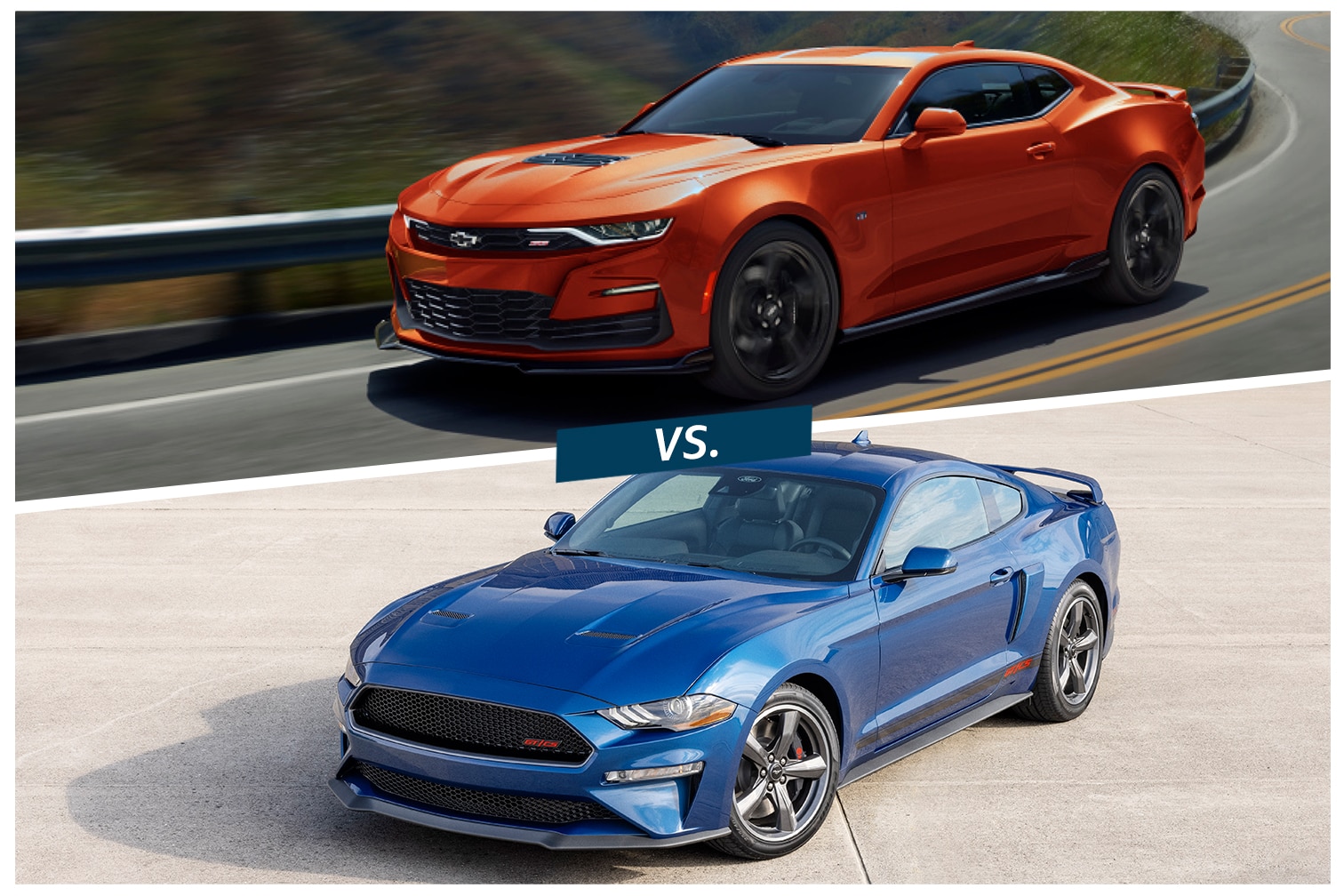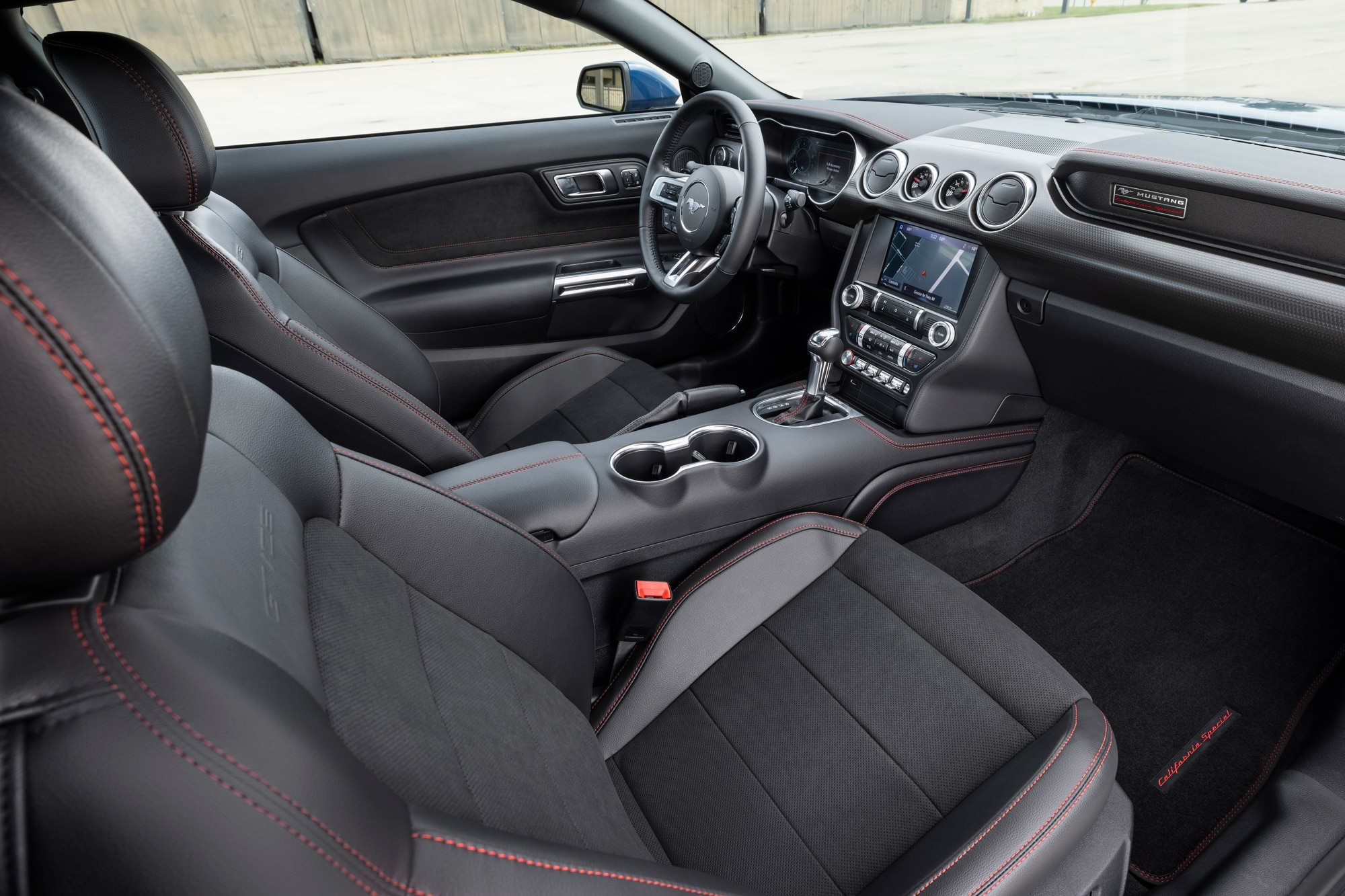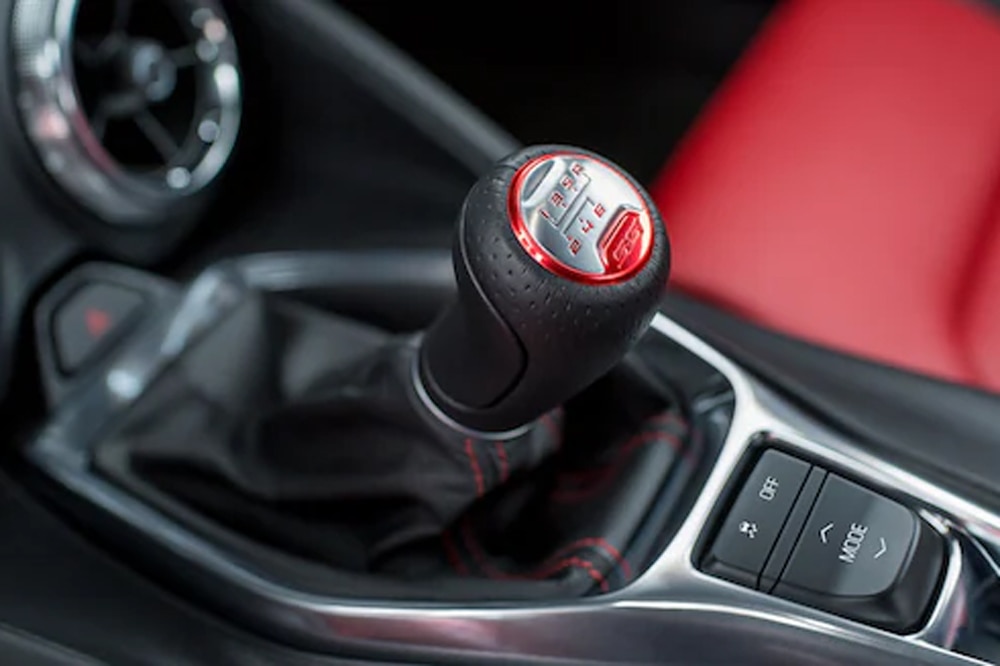Compared: 2022 Ford Mustang vs. 2022 Chevrolet Camaro
With so many performance and personalization options available, either of these pony cars could be your perfect ride.
 Chevrolet/Ford
Chevrolet/Ford
QuickTakes:
While the range-topping Ford Mustang Shelby GT500 and Chevrolet Camaro ZL1 may grab the most headlines, lesser models in the Mustang and Camaro lineups still provide plenty of style and performance without breaking the bank. Let’s see what they have to offer.
Ford Mustang vs. Chevrolet Camaro: Performance
The entry-level Mustang’s turbocharged, 2.3L four-cylinder eclipses the base Camaro’s turbo 2.0L in horsepower, at 310hp compared to 275hp. Opt for the Stang’s 2.3L High Performance package and power jumps to 330 hp, just five ponies shy of what the Camaro 1LT’s optional 3.6L V6 makes. That package also nets some suspension tweaks, better brakes, and aerodynamic improvements.
As for V8 power, the 6.2L found in the Camaro LT1 and SS models isn’t as sophisticated as the Mustang GT’s 5.0L, but it produces more horsepower (455 versus 450) and torque (455 versus 410). The track-honed Mustang Mach 1, however, coaxes 470 ponies out of Ford’s V8 and ups the performance envelope with Brembo brakes, MagneRide adaptive dampers, special chassis tuning, an upgraded cooling system, unique fascias, and stripes.
To get that level of performance on a Camaro, you’ll need the 1LE Track Performance package, which Chevy reserves for the 1SS and 2SS coupes. The 1LE pack includes a limited-slip diff, a performance exhaust, Recaro bucket seats, MagneRide adaptive dampers, Brembos, summer tires, and a black splitter, hood, and spoiler.
If the 1LE or Mach 1 looks too extreme, you may wish to consider the Mustang GT with the Performance package. That model gets a Torsen limited-slip differential, upgraded brakes, and unique suspension tuning, but skips the cosmetic flair.
 Ford
Ford
Ford Mustang vs. Chevrolet Camaro: Interior
Despite being slightly narrower and riding on a shorter wheelbase than the Camaro, the Mustang still provides more front-seat leg, hip, and shoulder room. The Mustang also wins in cargo capacity, providing around 14 cu.-ft. of trunk space compared with the Camaro’s paltry 9 cu.-ft.
All Mustangs have blind-spot monitoring and forward collision alert, both of which Chevy reserves for the 3LT and 2SS trim levels. And while lane-keeping assist comes standard on the Ford, you won’t find it on any Camaro. At least Chevy provides Android Auto and Apple CarPlay functionality for free. Ford requires buyers select the high equipment group to get it on the base Mustang.
 Chevrolet
Chevrolet
Ford Mustang vs. Chevrolet Camaro: Price
The around $26,900 Camaro 1LT is the least expensive pony car on the market, but the entry-level Stang’s higher horsepower rating and additional safety features make its about $28,900 base price worthy of consideration.
For the best bang for your buck, turn to the about $35,400 Camaro LT1 coupe, which is the cheapest V8 option between these models. If you want that kind of power in a convertible, you can get it in the Camaro for as low as about $41,400, whereas it’ll cost you about $50,000 over at Ford.
Shopping for a track toy? While that Mustang Mach 1 might be tempting, its about $57,700 sticker is substantial, especially when you consider that a similarly equipped Camaro 1SS 1LE rings in at about $45,000.
Written by humans.
Edited by humans.
 Evan McCausland
Evan McCauslandCar, truck, train, or bus—if a vehicle has wheels, chances are Evan McCausland is interested in it. More importantly, he’s interested in helping others learn more about cars and trucks, especially when it comes time to make a decision on their next vehicle purchase. For nearly two decades, he’s been fortunate to have the opportunity to do just that, writing for major automotive publications, automotive clubs, and automakers alike.
Related articles
View more related articles